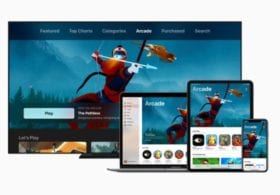| A CYNOPSIS MESSAGE FROM THE SPONSORSHIP GROUP FOR PUBLIC TELEVISION |
PBS is BRAND SAFE, #1
PBS has always been brand safe for sponsors.
But we wanted to learn more about how viewers feel about brand safety.
We fielded a study with Lightspeed Research and confirmed viewers believe PBS is a safe haven, and that their positive feelings about PBS are transferred to PBS sponsors.
The study revealed a surprising amount of viewer dissatisfaction with other content on TV, and the impact on media platforms and advertisers. Intrigued? READ THE FULL STUDY, and scroll down to our next message for more insights.
|
| A CYNOPSIS MESSAGE FROM THE SPONSORSHIP GROUP FOR PUBLIC TELEVISION |
PBS is BRAND SAFE, #2
The SGPTV/Lightspeed Study on Brand Safety revealed viewers’ deep concerns about offensive content on networks other than PBS.
• 91% have viewed programming they consider to be objectionable
• 54% have taken action against at least one company that financially supports objectionable content
Where sponsors/advertisers place their message really matters. That’s a good reason to explore PBS sponsorships. READ THE FULL STUDY
|
| |
First, the TV positioning issue. The traditional TV networks and even individual stations have sensed the problems with Internet and have started to pitch marketers on the control of their content and the ways in which that control is perceived by consumers. The Sponsorship Group for Public Television, a national PBS sales organization representing iconic PBS content such as Masterpiece, Antiques Roadshow, NOVA and Arthur, commissioned a study recently to quantify consumer concerns and their potential effect on brand perception. The results showed the expected negative reaction to “biased, racist, violent” content. Fifty-seven percent of the respondents said that networks who produce “objectionable” content negatively affected their perception of the companies that advertised on or sponsored that network. It also assigned responsibility for the content to the sponsoring brand. Sixty-three percent of the respondents said that “a company that advertises on/sponsors objectionable content is responsible for making that content possible.”
“Controversial content impacts everyone in the branding equation,” says Suzanne Zellner, Vice President of Corporate Sponsorship, Sponsorship Group for Public Television. “No brand wants to advertise in an environment where they risk their brand. Brands want to know exactly what they’re getting in terms of content. And viewers want an environment where they’re spoken to intelligently and respectfully.”
Zellner points out that brand safety has “never been an issue” at PBS, but is now more attractive to a wider group of sponsors. She also believes that the halo effect from viewer appreciation of PBS content has helped their sponsors achieve better results, pointing to Viking Cruises, which was able to expand their audience and their reputation via PBS sponsorships and the events and customer interactions that come with the sponsorship package. That audience, she says, valued the integrity and the “respectful” nature of the brand alignment between PBS and Viking Cruises.
|
| A CYNOPSIS MESSAGE FROM THE SPONSORSHIP GROUP FOR PUBLIC TELEVISION |
PBS is BRAND SAFE, #3
The SGPTV/Lightspeed Study confirmed PBS leads in brand safe, trusted content, and viewers are aware of differences among networks.
• Percentage of viewers who believe the content is family-friendly: PBS 84% | Cable 68% | Broadcast 66%
• 94% of parents said that PBS KIDS is a trusted and safe place for children to watch television, vs. 77% of viewers of other children’s cable networks.
Good news for PBS sponsors: this positive view of PBS is transferred to PBS sponsors. READ THE FULL STUDY
|
| |
Digital TV: Technology Opens Opportunities and Issues
Enter digital, or connected TV. eMarketer estimates that connected TVs will reach 55.5% of the US population in 2018, up from 47.4% in 2016. Over-the-top (OTT) video platforms that can be viewed without a physical television or a cable provider’s set-top box are also growing. eMarketer forecasts that 62.6% of the US population will view OTT video in 2020, up from 60.7% this year. As any digital media technology does, digital TV has security issues. Technically, digital TV has different authentication standards that need to be secured. And with the presence of YouTube and its one billion international users, the specter of objectionable content comes to the TV screen.
The Video Ad Bureau released a report in October that laid bare some of the issues that YouTube brings to connected TV as well as the opportunities. It found that 51 percent of all YouTube videos had low brand safety scores (objectionable or violent content). It also reported that, “Accurate measurement of the 50+ Million channels on YouTube is a daunting, if not impossible,” task, and only 17,398 properties are measured. The VAB recommends advertising on fewer and more predictable content channels on YouTube.
The solution lies in increased measurement. To that end, several media properties and measurement partners have stepped up. In October, Roku announced Measurement Partner Program, which expands its reporting and audience measurement capabilities. It builds on its OTT platform to integrate Nielsen Digital Ad Ratings (DAR) and offer audience guarantees based on age and gender. For its YouTube issues, in July Google announced a brand safety partnership with Integral Ad Science to identify and decrease inappropriate content.
A June report from the Advertising Research Foundation also supports the need for measurement and research. According to Horst Stipp, EVP Research and Innovation at the ARF, brand safety and brand context are issues that can best be addressed by knowledge of the consumer (viewer) and the emotional impact of the advertising creative. Marketers, Stipp says, “benefit from investing in research that helps them place advertisements in an environment that the target consumer likes and pays attention to. Deeper knowledge can help marketers understand the target’s attitudes and emotions, which helps them identify those contexts that provide emotional connections between the advertisement and the brand in order to align with the target’s preferred content.”
Stipp warns against creating standards for context effects. Brand safety, he says is an opportunity to improve engagement: “If marketers understand their specific targets’ affinity to the content with which their consumers engage, as well as the role of other contexts—such as other media platforms, time, and place—there are real opportunities to enhance the effectiveness of advertising messages.”
|
| A CYNOPSIS MESSAGE FROM THE SPONSORSHIP GROUP FOR PUBLIC TELEVISION |
PBS is BRAND SAFE, #4
PBS’s brand safe environment pays off for sponsors by improving brand perception and increasing purchase preference.
• Percentage of viewers who believe that sponsors/advertisers have a commitment to quality and excellence: PBS 69% | Cable 36% | Broadcast 30%
• Percentage of viewers who prefer to purchase from a sponsor/advertiser: PBS 44% | Cable 24% | Broadcast 18%
|
| |
Digital Media Feels The Heat
For online advertising, several recent consumer surveys show that brand perception has been affected by adjacencies to marginal content. Among those surveys: “The Brand Safety Effect,” from brand safety company CHEQ, IPG Mediabrands, BMW, Magna and an online entertainment platform.
The study polled 2,000 consumers for both qualitative and quantitative results. They defined “unsafe content” in 12 different categories including violent, politically sensitive and criminal. The quantitative results showed that ads that appear near negative content cause a 2.8 times decrease in consumer intent to associate with the brands. And many consumers view unsafe ad placement as an intentional endorsement of the negative content. One respondent quote was typical: “Looks like they’re exploiting shock value.”
Brands should transition from a measurement strategy to a prevention strategy, says Guy Tytunovich, Founder and CEO of brand safety company CHEQ: “With such costly damage, measuring negative exposure after-the-fact seems futile, which is why brands must prevent these issues before the impression is ever served.”
Brand safety on traditional TV, digital TV or online starts with marketers. “If brand safety is a top concern, advertisers should ensure that they appear only in media that has validated users, has been professionally produced, and has measurable, verifiable audience,” says Simulmedia EVP marketing Matt Collins. “Fortunately, advertisers have lots of great choices here. For example, these conditions apply to most of the content produced by TV broadcasters, whether delivered via cable, over-the-air, or over-the-top. On the other hand, they may not apply in places known more for their user generated content.”
|
|






